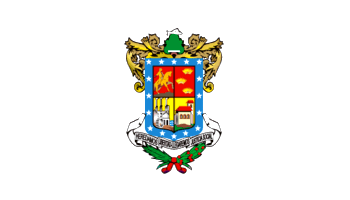For more than a thousand years, Michoacán has been the home of the P'urhépecha Amerindians (also known as the Tarascans). The modern state of Michoacán preserves, to some extent, the territorial integrity of the pre-Columbian Kingdom of the Purhépecha. This kingdom was one of the most prosperous and extensive empires in the pre-Hispanic Mesoamerican world. The name Michoacán derives from the Náhuatl terms, michin (fish), hua (own) and can (place), which roughly translates into "place of the people who have fish."
The Tarascans of Michoacán have always called themselves P'urhépecha. However, early in the 16th century, when the Spaniards arrived to what is known now as Mexico, they gave the Purhépecha a name from their own language. The name of these Indians, Tarascos, was derived from the native word tarascué, meaning 'brother-in-law'. According to Fray (Friar) Martín Coruña, it was a term the natives used derogatively for the Spaniards. The Spaniards mistakenly took it up to name them and now the Spanish word Tarasco (and its English equivalent, Tarascan) is commonly used today to describe the Indians who are really named P'urhépecha.

This statue of José María Morelos lies on the island of Janitzio, in Michoacán's Lake Patzcuaro.
The P'urhépecha or Phorhé language is a language isolate which means that it has not been successfully related to any known language families. It has been compared to many other languages but no relation has been sufficiently well proven to attract a wide following among linguists. Even though it is spoken within the boundaries of Mesoamerica, P'urhépecha does not share many of the traits defining the Mesoamerican Linguistic Area, probably due to a long adherence to an isolationist policy.
By 1324 A.D., they had become the dominant force in western Mexico, with the founding of their first capital city Pátzcuaro, located 7,200 feet (2,200 m) above sea level along the shore of Lake Pátzcuaro (Mexico's highest lake). The name, Pátzcuaro, meaning "Place of Stones," was named for the foundations called "Petatzecua" by Indians who found them at the sites of ruined temples of an earlier civilization. Eventually, however, the Purhépecha transferred their capital to Tzintzuntzan ("Place of the Hummingbirds"), which is about 15 kilometers north of Pátzcuaro, on the northeastern shore of the lake. Tzintzuntzan would remain the Purhépecha capital until the Spaniards arrived in 1522. |
